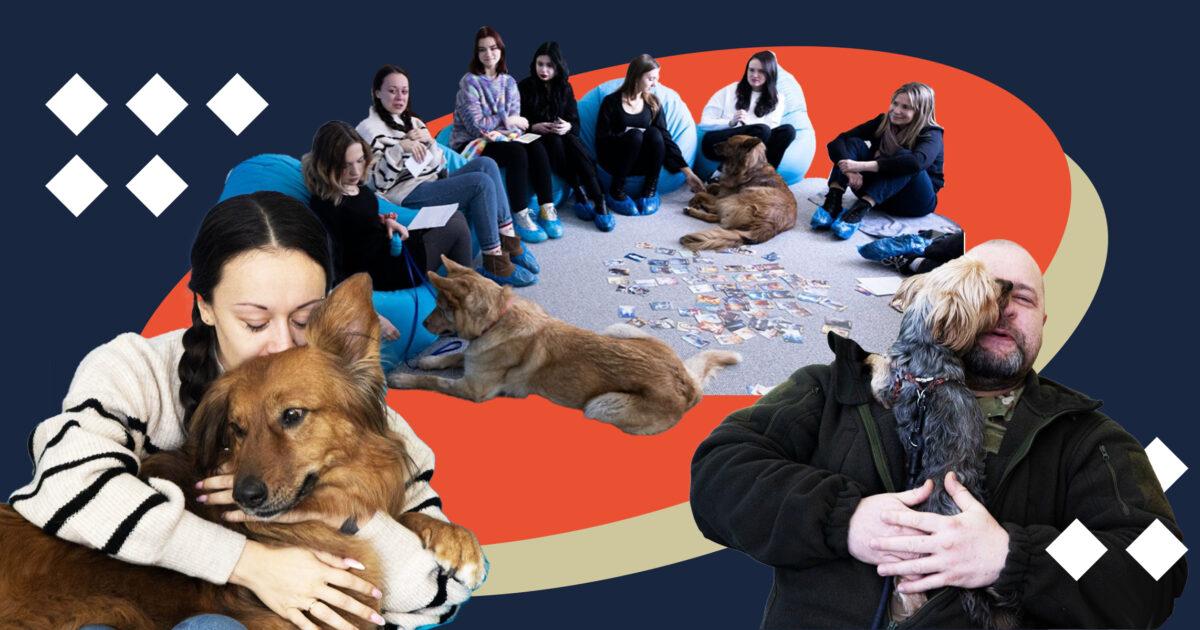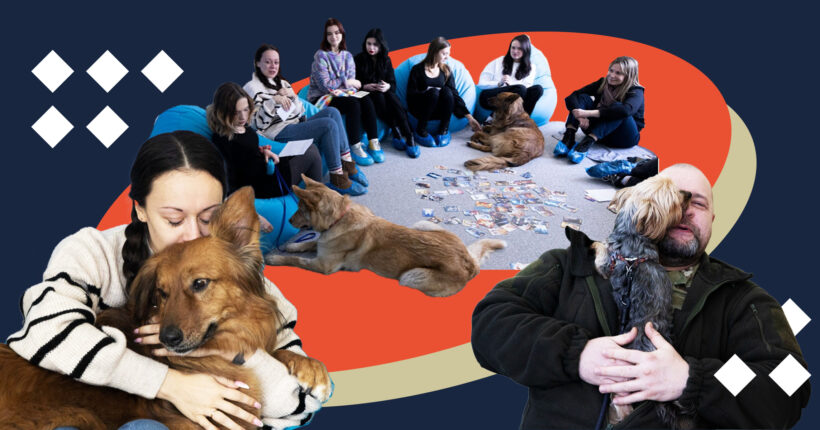
What is the problem?
Fear, loneliness, and anxiety. Coping with these feelings alone is difficult — it seems you are alone against the whole world. Oleksandra perfectly understands this condition — war forced her to flee from Mariupol to Kyiv.
"It is tough now because we left our homes. My husband is a soldier, and he is now serving at the front. It is difficult to cope with this alone. I don't have the resources, but I must support him," Oleksandra shares.
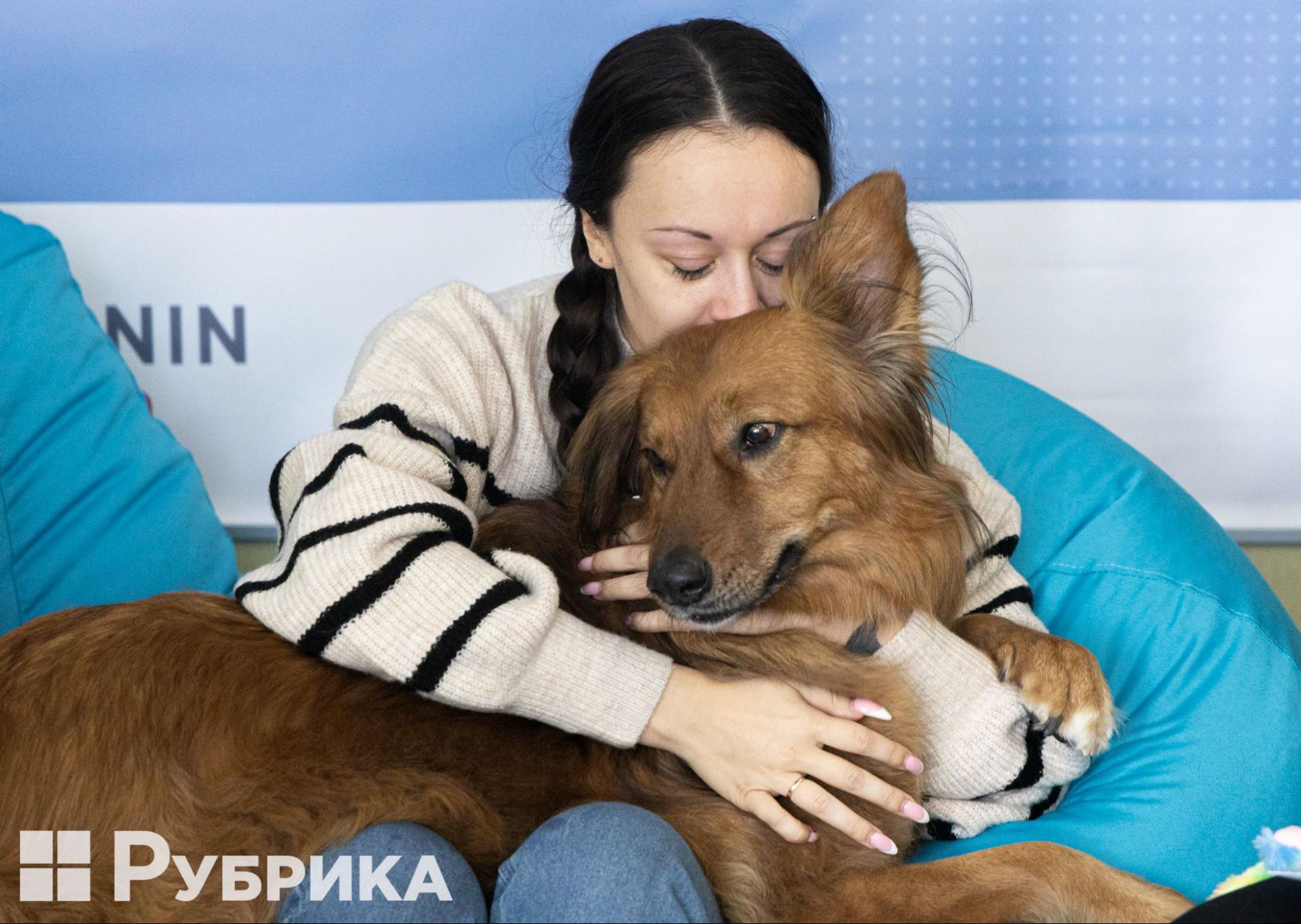
Oleksandra is hugging the dog, Chelsea.
Due to the Russian aggression, many Ukrainians live similar life stories: someone has a loved one at war, someone has lost their home or job, and someone has given up because of exhaustion. You have to learn to live with all this.
What is the problem?
It is never too late and never a shame to seek help from a qualified specialist. However, if you still struggle to express your feelings and trust another person, you should try a different approach. How about an unusual therapist who may not give you words of encouragement but will lend a helping paw?
Canister therapy is a special type of therapy that involves dogs in therapy sessions. The INNIKOS canister therapy center in Kyiv was established recently, but it already has regular visitors and invites all who are willing to undergo therapy with four-legged helpers.
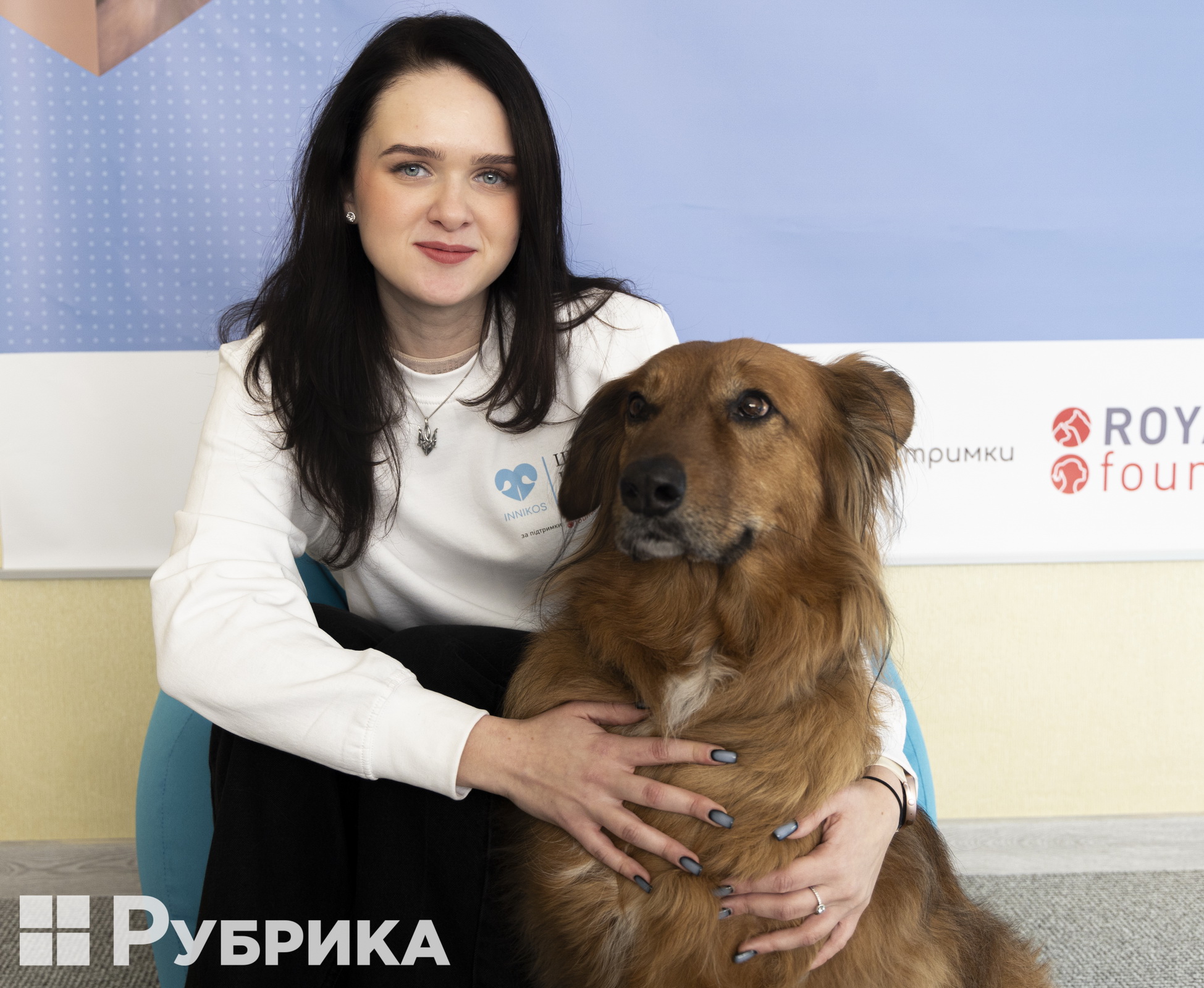
Darya Reznichenko is a cynologist and administrator of the INNIKOS Canister Therapy Center.
Currently, the Canister Therapy Center cooperates with the YaMariupol, Veteran Hub, and Base 4.5.0 centers and helps internally displaced persons, children, military personnel, veterans, and their families. Therapeutic sessions are held both in their own space and on-site — in the partners' spaces listed above.
Darya Reznichenko, dog trainer and administrator of the INNIKOS Canister Therapy Center, says: "We always go with two dogs to outing classes to make it more interesting for the children and the dogs don't get tired. For example, Nika is more active, and Chesley is calm — she likes to lie down while being petted."
How does it work?
Selection of the four-legged therapists
All four-legged therapists live with the center's employees. The experts talk about their pets with great tenderness. Nika has been working as a therapist for eight years. Before that, she lived with homeless people and dogs. "She reminded me a lot of the pet I worked with in search and rescue. When I saw Nika, I decided I wanted her to be with me," Maryna Prokopenko, a cynologist and head of the center, recalls the story of love at first sight. She laughs that she had to persuade Nika to move for another two weeks because "she had a good time where she lived."
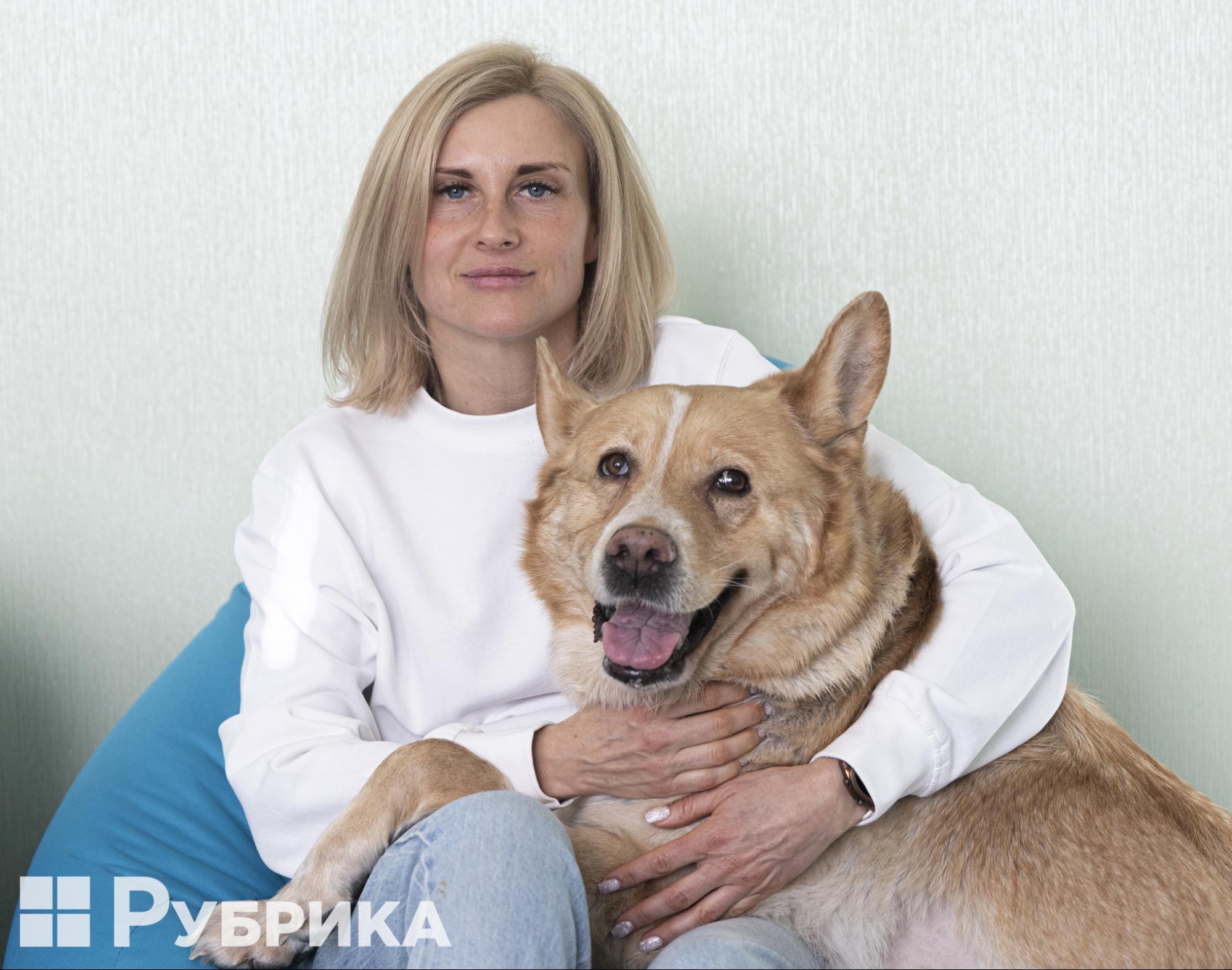
Maryna Prokopenko with her favorite dog, Nika.
Eventually, Nika was certified as a search and rescue dog and successfully searched for people. However, due to the injury, she was forced to undergo long treatment and change her profession, first to an assistant for people with reduced mobility and later to a therapist.
"Nika was the first assistant dog. We taught her various things: turn on the light, open the refrigerator, and look for things by smell, for example, gloves or shoes. It was not difficult for her to change her profession because she has a large base of skills and knowledge," Prokopenko recalls.
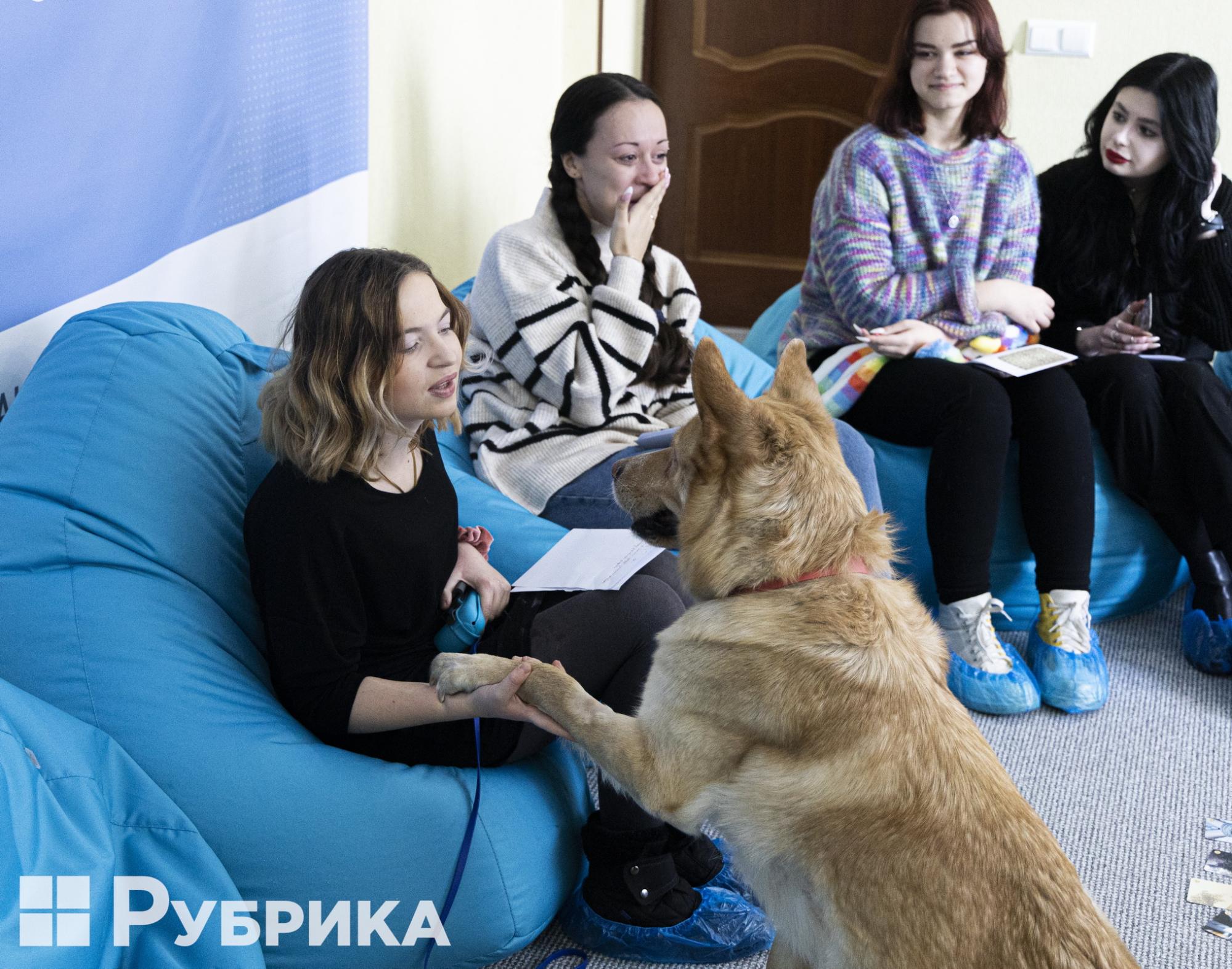
Nika is in the process of therapy.
Prokopenko says that Nika is not a typical dog: she understands everything like a person and knows whom and when to help — she is cunning and wise. "I am very grateful to her. She changed a lot in my life," says the dog specialist.
To become a therapy dog, a four-legged undergoes special selection and training. The dog must:
- love people and communication with them,
- be cheerful
- be controlled by a person, respond to stop lights and commands,
- not be aggressive.
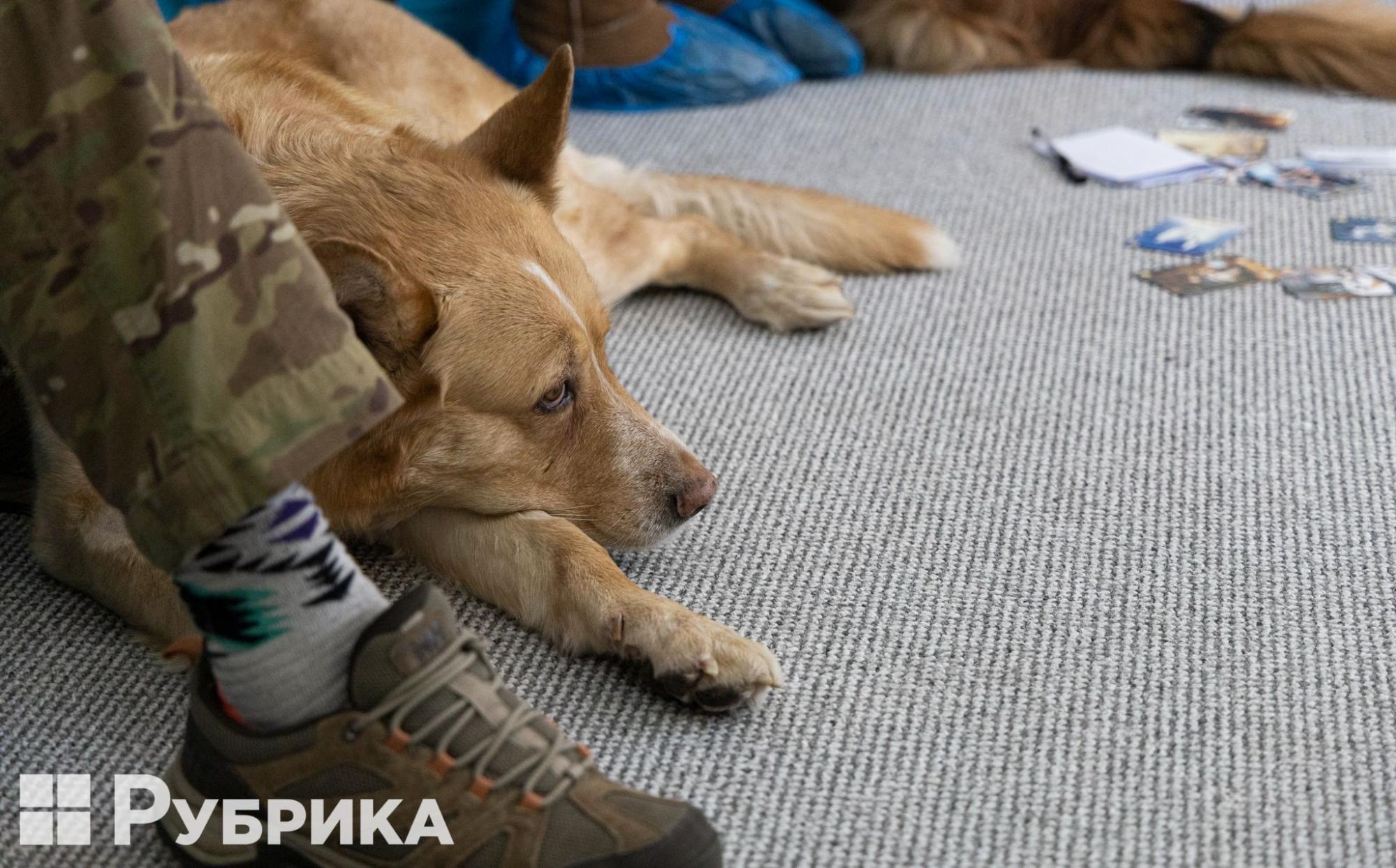
Any contact with an animal cannot be considered as canister therapy. Prokopenko adds that a person may shout, hit (the surface, ed.), or throw something during a session, and these dogs are trained to respond calmly to such actions. They do not have a natural dog response like growling, barking, or biting. The most important thing is that these dogs like human contact.
At the same time, the center ensures that the dog does not get tired from excessive communication with a person — they take breaks for the dog to be alone.
Why is canister therapy beneficial for the rehabilitation process?
The head of the INNIKOS center explains that the center has two areas of work — therapy and rehabilitation. A rehabilitator works mostly with military personnel, a psychologist with families, children, internally displaced persons, and all war victims.
In particular, military personnel at the center actively participate in group classes and individual communication with dogs. Rehabilitation usually begins with communication with the dog. Then, come the sessions with rehabilitation specialist Serhii, a servicemember who knows how to properly help restore the resources of people fighting for Ukraine today. He helps the military deal primarily with physical problems — for example, muscle spasms due to the constant wearing of body armor.
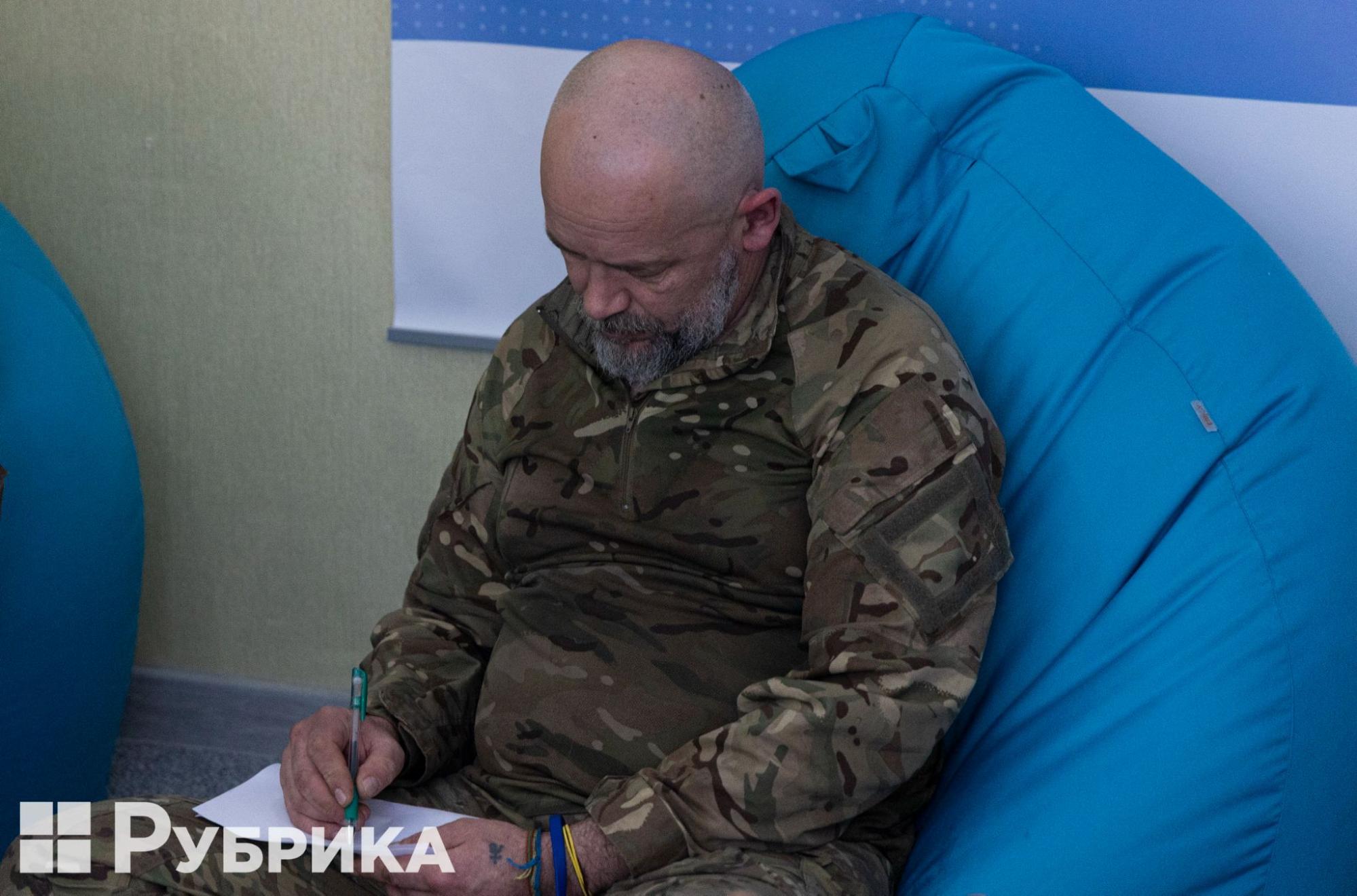
A soldier at the Canister Therapy Center.
Communication with dogs is necessary in rehabilitation to reduce stress and anxiety and normalize the human condition. Prokopenko says that during the classes, the participants play with the four-legged animals, pet them, touch them, and give different commands: "This changes the person's condition, and then it is easier for the specialist to work with them."
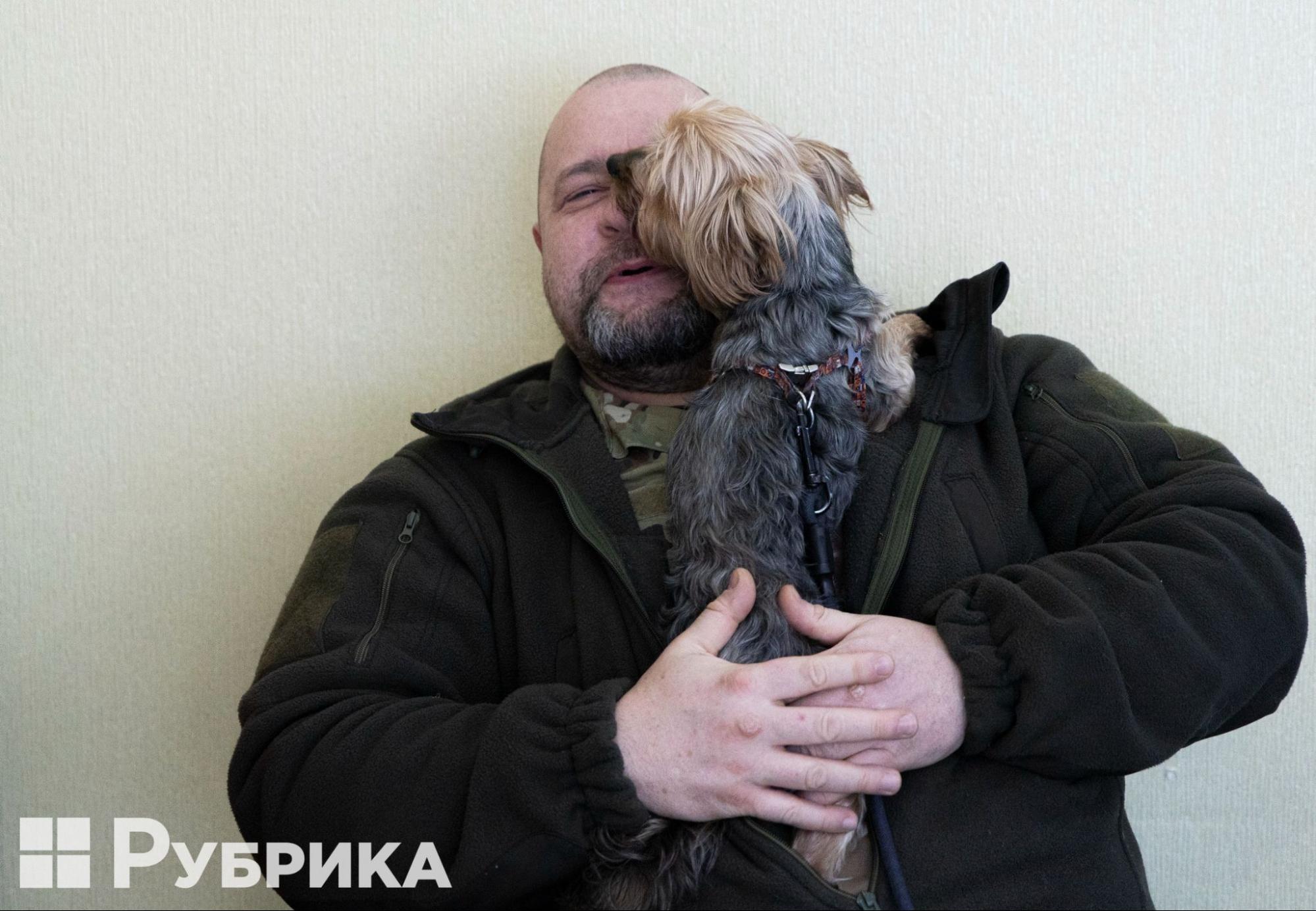
Dogs are taught how to establish contact with a person: first, they put a paw on a person or bring a ball. A rehabilitation specialist or psychologist offers the participants to walk with the dog, sit, hug, or play. Only a specialist knows how much time a person needs to recover — but the dog is always nearby. Prokopenko says: "When military personnel experience some kind of pain, they pet the dog or ask for a paw, which helps them to get through the pain more easily."
Some servicemembers also share that they often take their four-legged friends to the front — wherever possible. There, dogs also help defuse the atmosphere and calm the military in difficult moments.
How does group therapy work, and who is it suitable for?
The psychologist has a key role during the therapeutic session: they guide the participants, ask questions, and help reveal the person's inner feelings. The specialist chooses the methods depending on the class's goals and the participants' needs.
Today, psychologist Anna Chasovnykova asks the participants to finish the phrases "I have…" and "I can…" on paper and then choose metaphorical cards that describe their state.
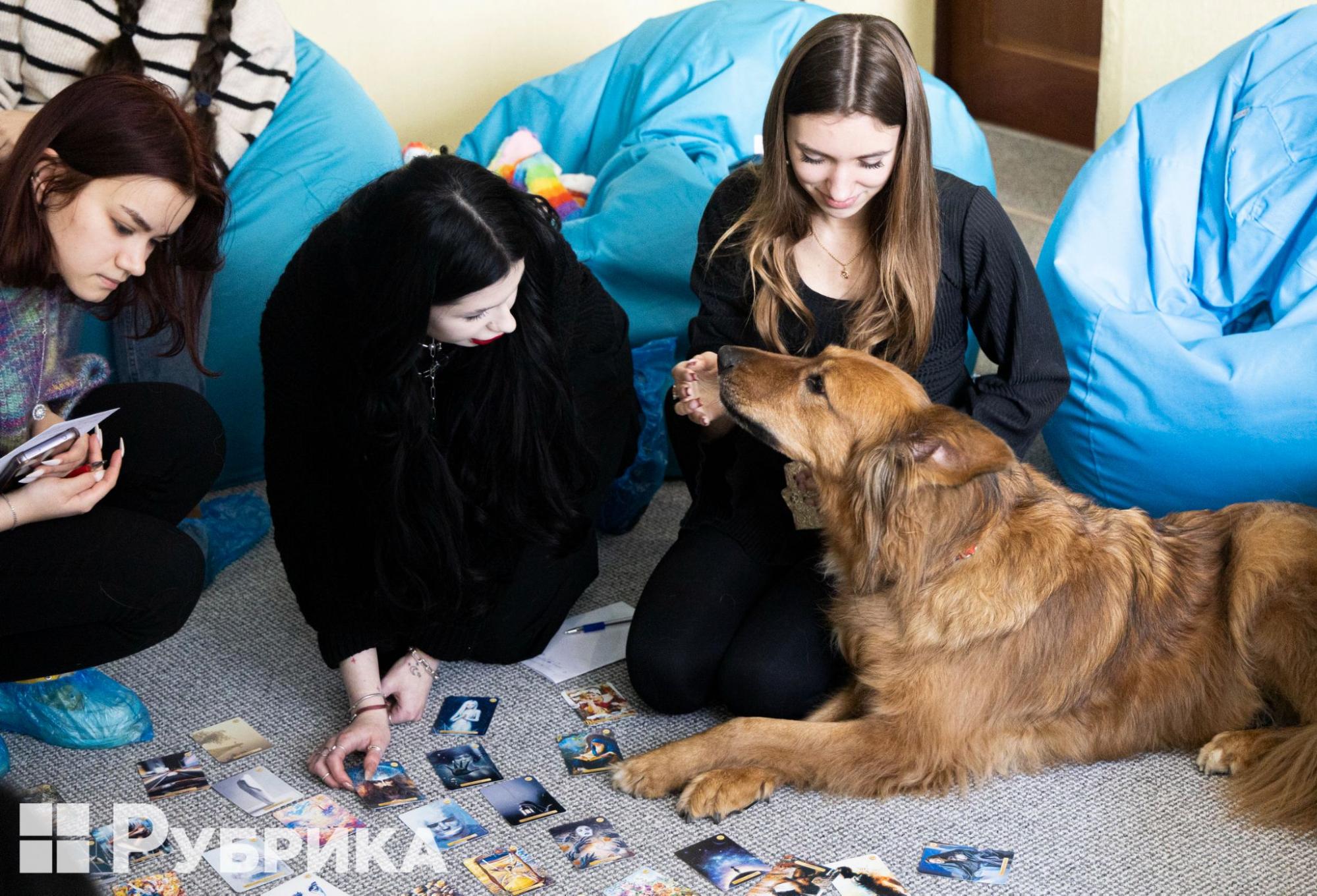
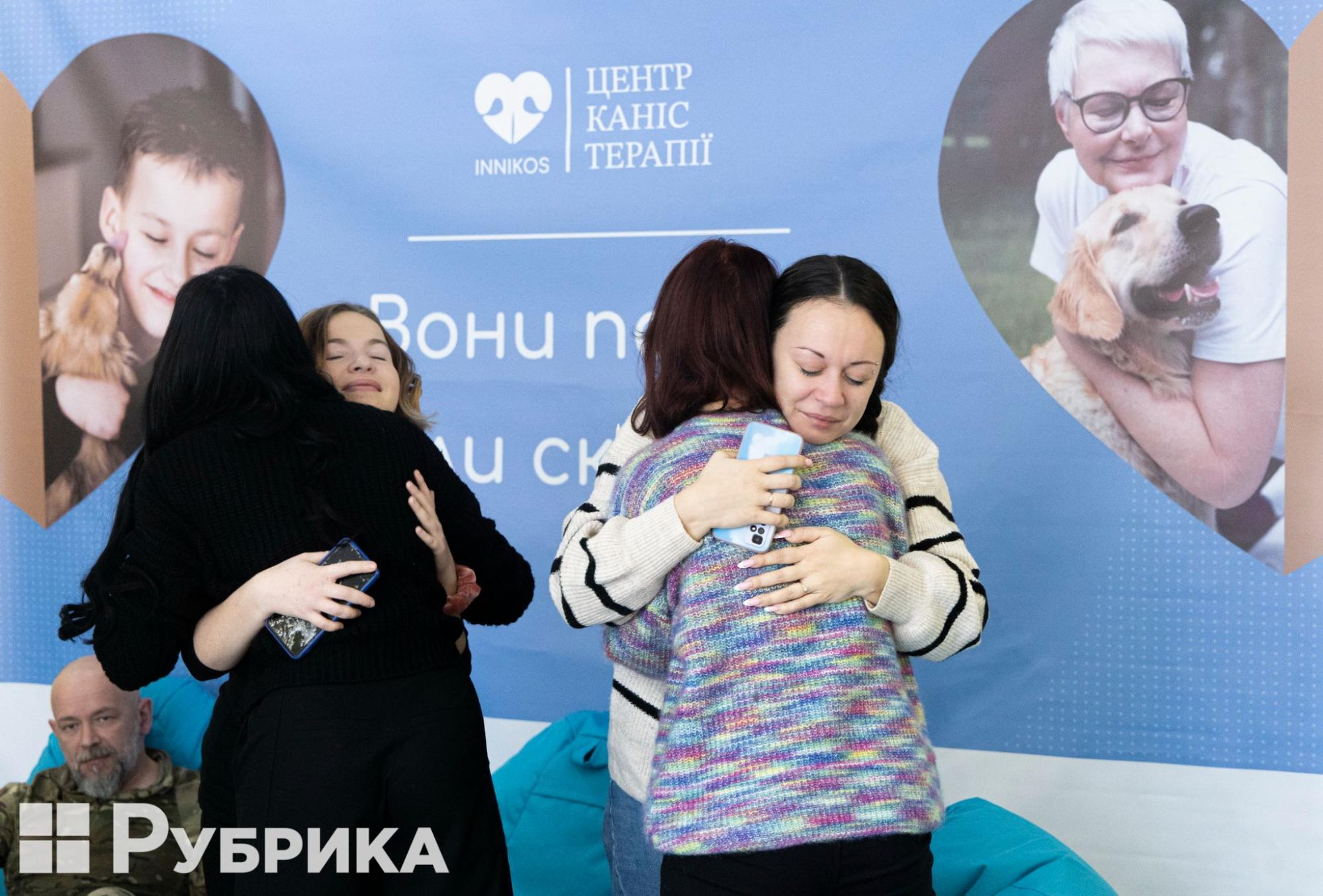
After that, everyone takes turns telling why they chose a certain card and what exactly they answered the question. This is how the participants get to know each other and better describe their condition. The peculiarity of group work is that no matter how frank the participants are in the stories about their experiences, they will not face condemnation in the group — only support and mutual sharing of experiences. That is why, for effective therapy, you need to be open and ready to talk, and four-legged friends will always help you feel calmer.
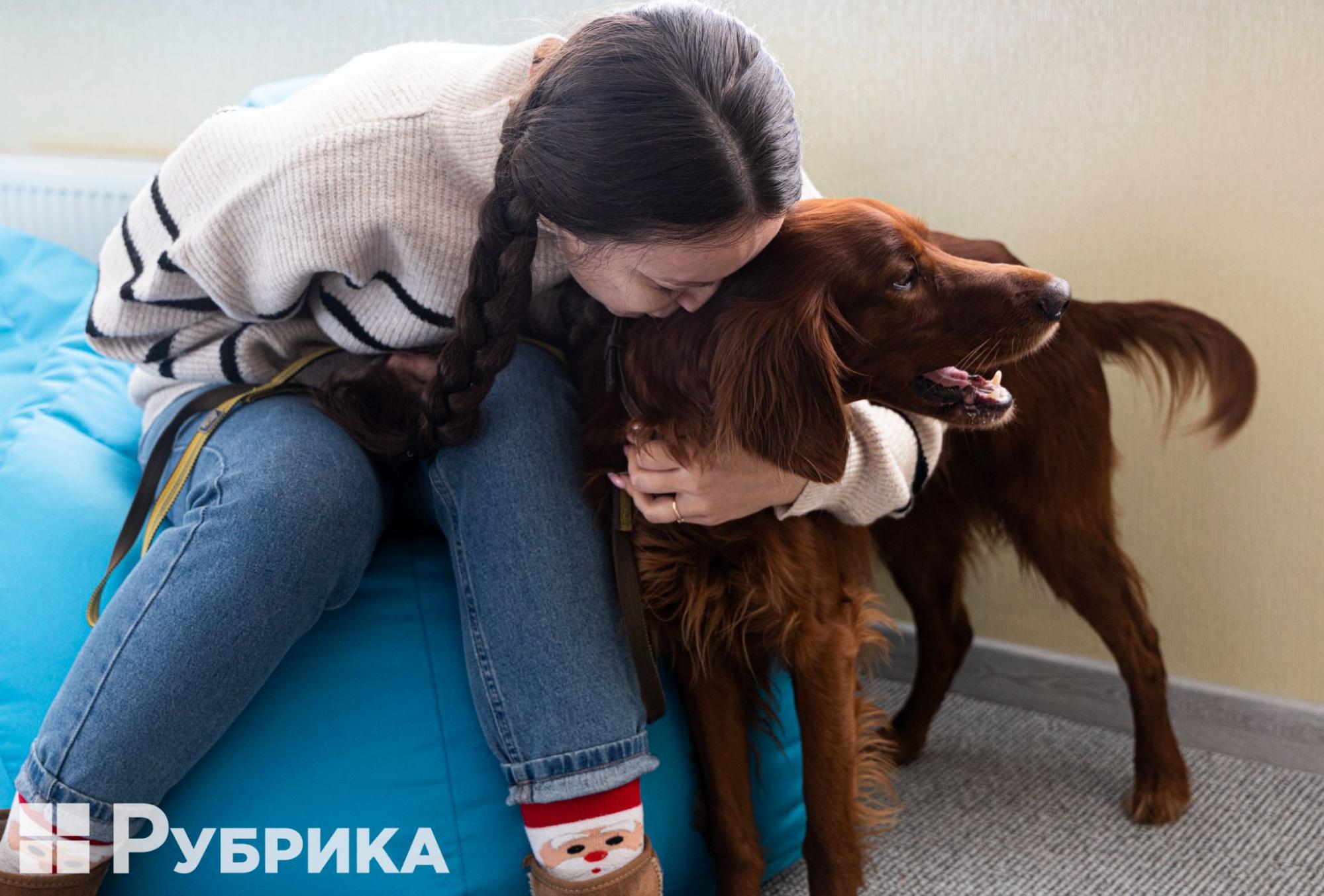
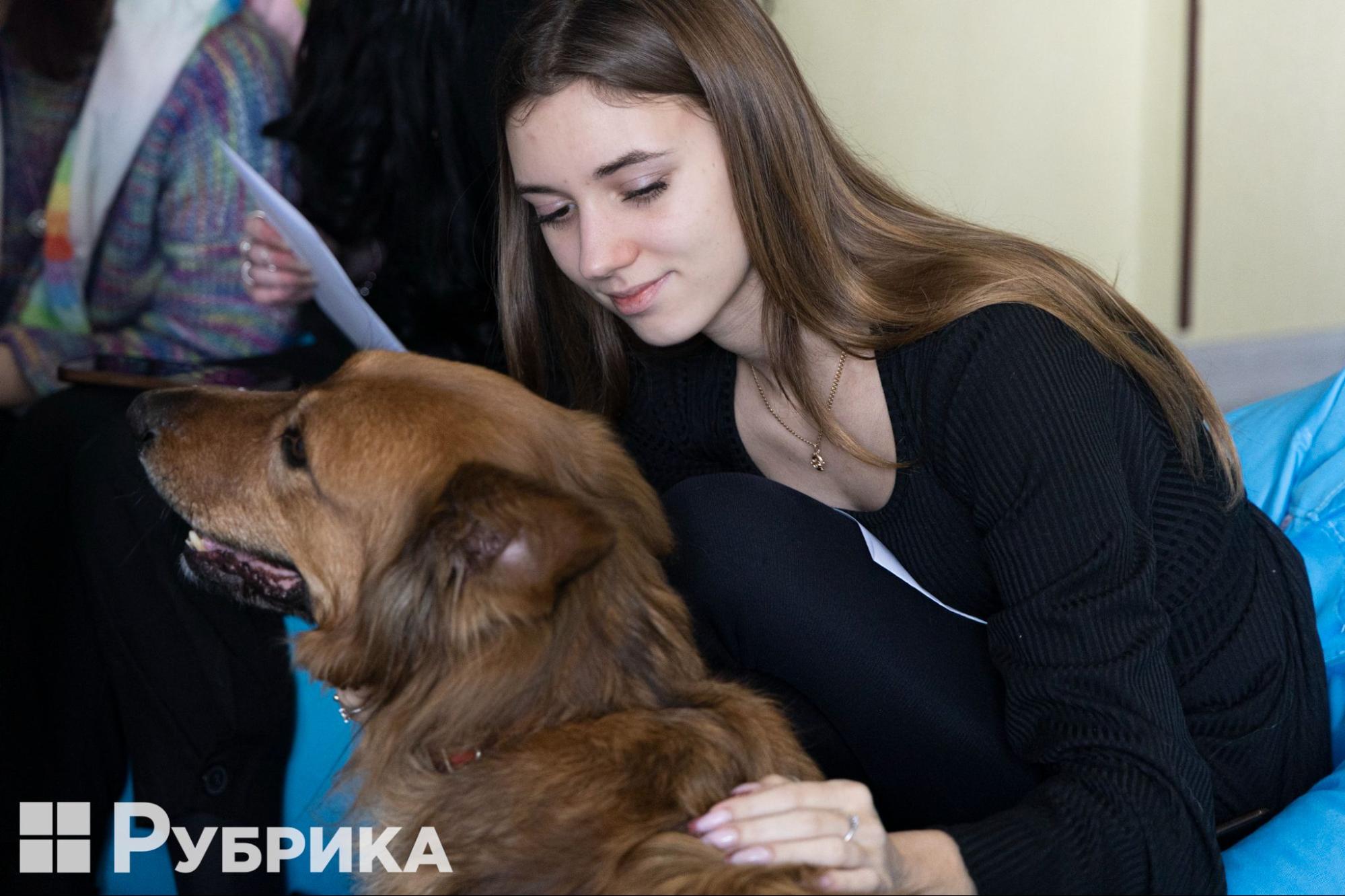
Therapy takes place both individually and in groups. The area of work is selected at the client's request. Canister therapy may be suitable for you if:
- you love dogs and spending time with them,
- feel stressed, anxious, angry, etc.,
- have difficulties adapting to the new realities of life or have a hard time enduring events related to war,
- you feel a lack of communication and support.
Classes with four-legged therapists are not the best solution if you are afraid of dogs or are allergic to animal fur.
All classes are free of charge. You can apply on the center's website.
The head of the center says that, in addition to classes with dogs, they plan to implement a program on felinotherapy — communication with cats: "We also have cats, but they work more with children because they need a familiar place, children that are mobile and more friendly to the animal."

Does it really work?
Victoria came to Kyiv from Mariupol in August 2022. She says that she turned to a psychologist for help when she realized that she could not cope on her own: "It was a difficult path for me. At first, I did not dare, but I realized I had no choice but to turn to a specialist and gradually solve all the problems accumulated throughout my life."
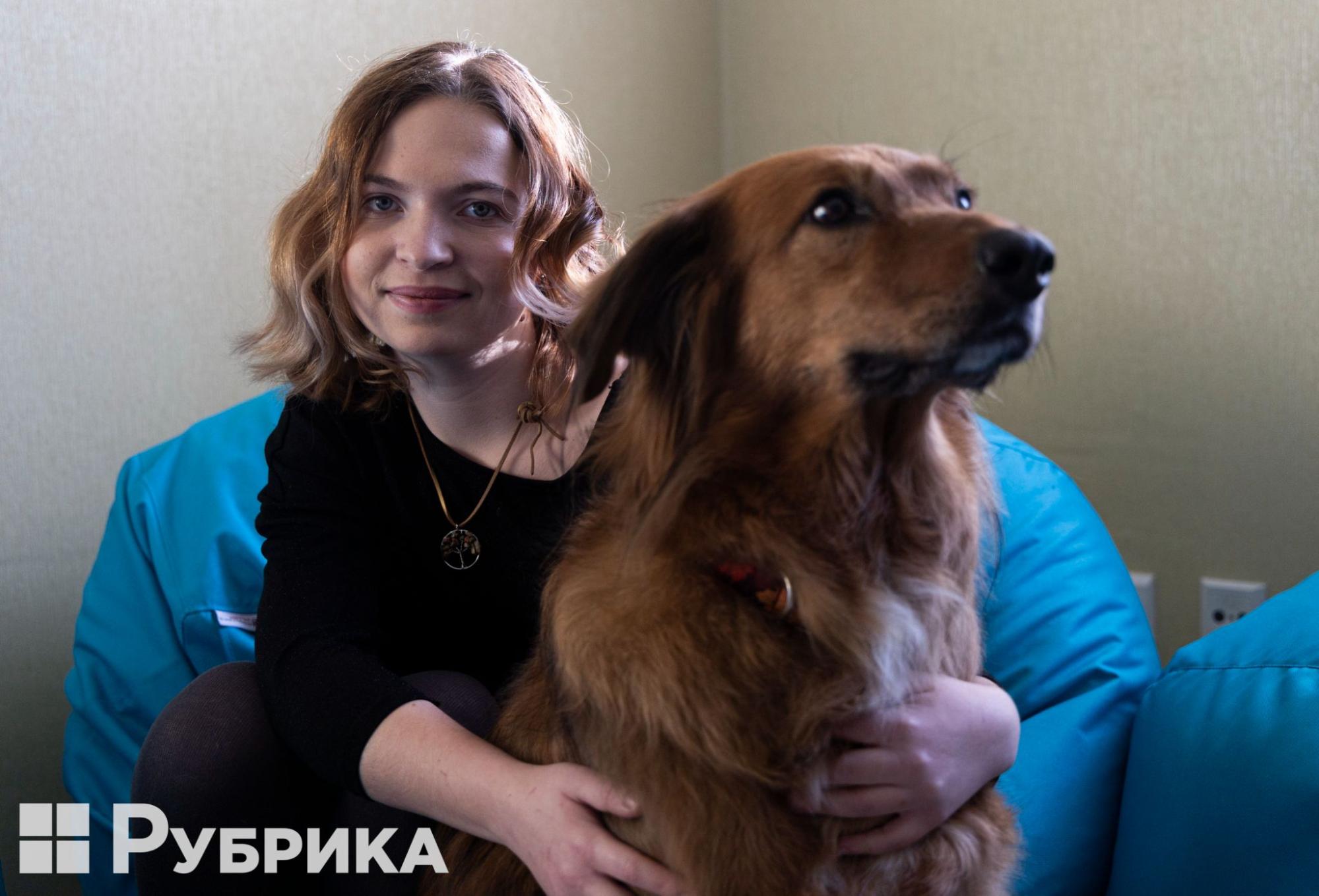
Victoria during a canister therapy session.
The resettler remembers her first experience with canister therapy. When Victoria was crying, the dog came up, gave her a paw, and put her head on her lap: "When I'm scared, or I talk about my intimate things, and I'm distraught, the dog supports me, which gives me confidence. Sometimes, I hug the dogs and just lie with them."
Victoria says she became the closest to the dog, Chelsea, who calms her: "After classes, I leave feeling refreshed. This mood persists throughout the week. I live alone, and my parents are very far away, so I don't feel much support unheard of. Fogs give me the feeling that I am not alone that I am needed, and somehow all the worries pass the soul becomes warm."


